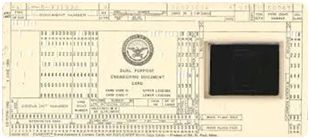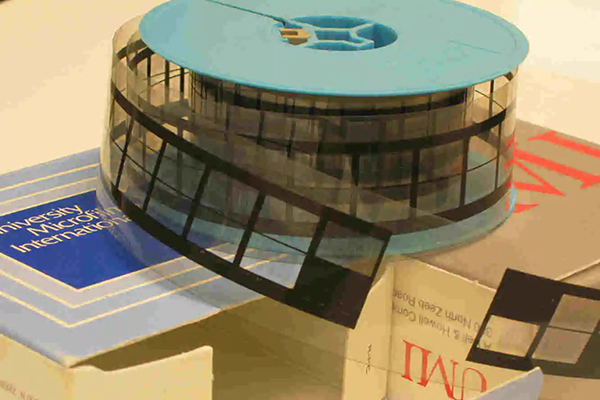
Aperture Card Sample
Microfilm and aperture card conversion represent essential processes in modernizing and preserving historical and critical documents. Microfilm, a technology dating back to the early 20th century, was used to store vast amounts of information on compact reels of film. However, with advancements in digital technology, the need for efficient access and preservation of these records has led to the conversion of microfilm and aperture cards into digital formats.
Microfilm conversion involves the digitization of microfilm rolls into electronic files. This process offers numerous benefits, including enhanced accessibility, reduced physical storage requirements, and improved document retrieval. Digital files are easily searchable, making it effortless to locate specific information within vast archives, saving time and resources.
Similarly, aperture card conversion is essential for organizations that have historically used aperture cards to store engineering drawings, blueprints, and technical documents. Converting aperture cards into digital formats ensures that these valuable records are not lost to degradation or misplacement. Moreover, digitized aperture cards can be seamlessly integrated into modern document management systems, streamlining workflow and collaboration among teams.
Both microfilm and aperture card conversion services employ cutting-edge scanning and imaging technologies to capture high-quality digital replicas of the original records. These digitized documents can then be stored securely, backed up, and easily shared across an organization or with the public, ensuring the preservation of valuable information for future generations.

Microfilm Sample
In today’s digital age, microfilm and aperture card conversion play a vital role in safeguarding the past while facilitating efficient information access and management in the present and future.
Frequently Asked Questions
Some organizations still use and require microfilm, so it’s not going away – even with all the digital technology available, microfilm is an incredible and stable method of preserving records over a longer period.
Absolutely, just like medical records, forms and everything scanned today, this information was and still is on microfilm. Close to 80% of the microfilm we convert contains confidential information which means we enforce the tightest security and disclosure measures.
Outsourcing is the most cost-effective and quickest way to convert these. Both are priced differently since microfilm is on a reel and microfiche has many images compressed on an index size card. There is also jacketed microfiche that companies would initially put on microfilm and then cut strips to be inserted into microfiche with sleeves. Before a cost can be given, specifics would need to be known and preferably a sample. Conditions of these vary greatly and image enhancement is almost always needed.
To purchase equipment to do this in-house, your cost on the low end would be $6,000.00 and a production scanner would be around $60,000.00. Volume, software, and other factors would dictate the machine needed.
Quick, flexible and easy access to your information, a digital image instead of analog. Both microfiche and microfilm were the best ways to store information before digital was compliant. Not only did it save space, it also guaranteed preservation, unreadable to the naked eye and was quicker to access the data. Organizations that must archive information forever are wanting this in a digital format to access freely and rid themselves of the hardware needed to view and print microforms. It is getting more difficult to find options on hardware and other supplies needed for microforms.
Yes. There are several microfiche digitization options available on the market. Outsourcing to professionals is the most cost-effective and common option. The other method is to purchase a microfiche/film scanner to digitize in-house. Today’s microfiche scanners are less bulky, user-friendly, and come with a whole host of useful features. These scanners allow you to view, print, and scan your microfiche/film.
Microfilm is used to store documents on a roll of film retrieved by a reader/printer. Today, only government agencies use this as a backup for archiving as digital images are now the preferred format. Most libraries and Recorder offices still use microfilm to retrieve historical information.

